Partners writing a new chapter for former Orick redwood mill site
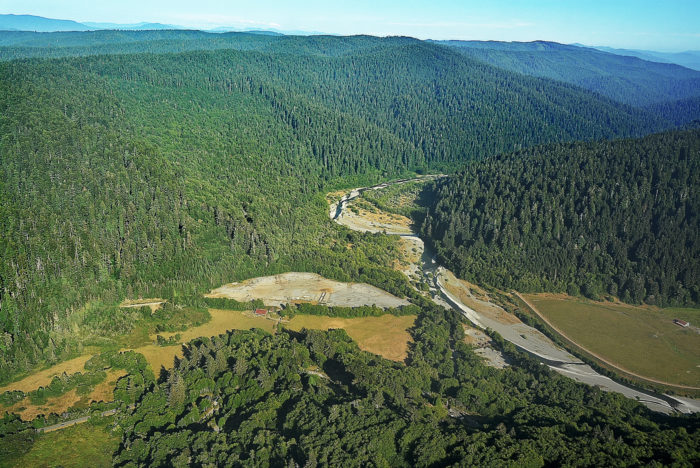
began. With partners, the League has begun restoring the site and constructing a southern visitor gateway to Redwood National and State Parks. Photo courtesy of John Northmore Roberts & Associates.
Asphalt gives way to redwood gateway and habitat restoration
On a 20-acre expanse of asphalt just outside of the small town of Orick in Humboldt County, something special is unfolding that is a testament to the power of nature to bring people together.
Decades ago, this spot at the confluence of Prairie Creek and Redwood Creek housed a mill that processed trees chopped down during an era that wiped out nearly 95% of the world’s old-growth coast redwoods. Earlier conservation efforts halted that loss, and today the site is nearly surrounded by Redwood National Park, which is part of the larger Redwood National and State Parks complex. For decades the mill site has remained as a scar on the landscape, a reminder of that misguided past.
Now that’s changing. The League purchased the Orick mill site property in 2013 with the goal of restoring and improving the site, and then transferring it to the National Park Service. With our partners, we have begun constructing a southern visitor gateway to Redwood National and State Parks, which attracts more than a million people each year to see the planet’s tallest trees and explore the area’s rich Indigenous heritage. As an essential complement to the new park infrastructure, the project will fully restore and showcase the ecological integrity of Prairie Creek, both for climate resilient habitat and as part of an inspiring visitor experience.
The asphalt will soon disappear, and the fish, wildlife and people will return. This is the aim of the Redwood National and State Parks Trails Gateway and Restoration Project.
I visited the site while construction was underway this fall, and what I saw was amazing. In our first phase of the five-year project, crews extracted invasive plants, constructed a 2-acre pond so that juvenile salmonids can grow and thrive, and removed 2 acres of asphalt to begin grading for the future segment of California Coastal Trail. Additionally, the National Park Service began construction of a connector trail from our property into their trail network that will enable hikers to reach Berry Glen, Lady Bird Johnson Grove, and other old-growth havens within Redwood National and State Parks. Yet the physical transformation underway is only part of the story – the project partnerships are equally uplifting.
Invaluable partnerships
This first phase of construction was supported by early funding partners that have helped to develop the tremendous potential in this project: California State Coastal Conservancy, NOAA Restoration Center, and Wildlife Conservation Board. Additionally, since the beginning, California Trout has lent its aquatic restoration expertise, and together we have drawn on the planning and design support of many other professional firms, agency partners, and the Yurok Tribe.
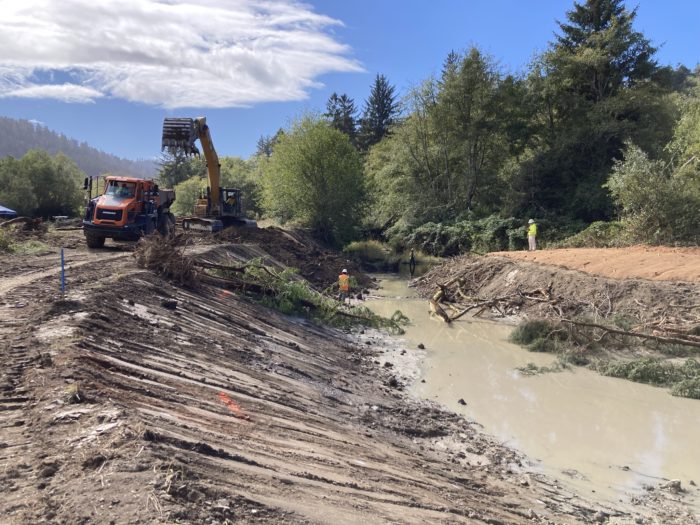
Our project collaboration with the Yurok Tribe is particularly rich and, I hope, bodes well for future partnerships with Indigenous communities. We benefitted from the immeasurable knowledge and skills of the Yurok Tribe Construction Corporation and Fisheries Department to implement the first phase of work this fall. The crew that removed asphalt and constructed and vegetated the pond was comprised of Yurok Tribal members working in their ancestral lands. The Yurok are leaders in the field of watershed restoration and their team takes great pride in transforming damaged environments into optimal habitat for fish and wildlife. They’ve done groundbreaking work on the Klamath and Sacramento Rivers, two of the biggest salmon-bearing streams in the continental US. We’re privileged to have them with us on this project.
Fortunately for future visitors to the Trails Gateway, we anticipate the Yurok Tribe will have a lasting role onsite long after construction is complete. The Tribe is a core partner in the development of interpretive exhibits for the property. Also, the Trails Gateway will include a Yurok village site that we envision will be managed by the Tribe, even after the property is transferred to the National Park Service. It will offer opportunities for Tribal members and the public to experience the living culture of the Yurok people.
In the end, our project is about healing through partnership – healing the scar on this precious redwood landscape and reconnecting human communities to it.
This feature appears in the beautiful printed edition of Redwoods magazine, a showcase of redwoods conservation stories by leading scientists and writers, as well as breathtaking photos, and ways you can help the forest. Only a selection of these stories are available online.
Join our thousands of members today for only $25, and you’ll get future editions of our Redwoods magazine.

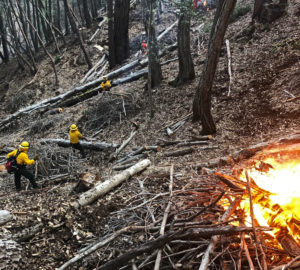
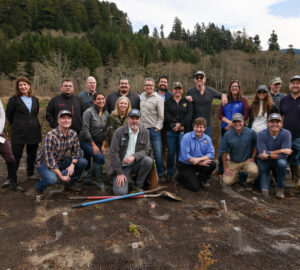
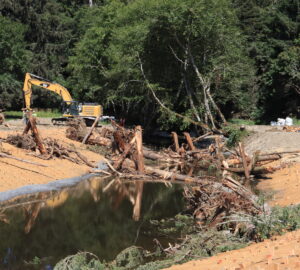
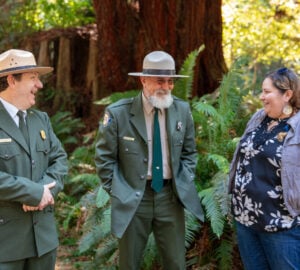
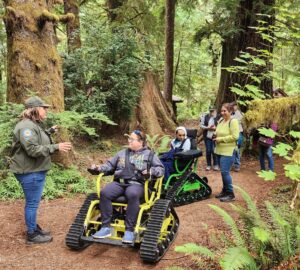
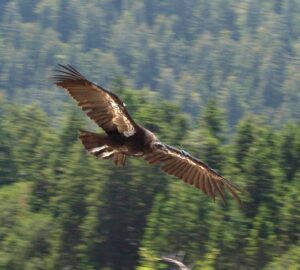
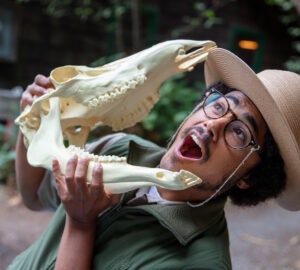
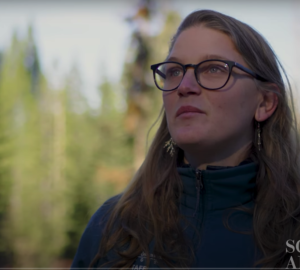

4 Responses to “Goodbye asphalt, hello nature”
Andrew Sawyer
Drove to Prairie Creek this weekend, lots of activity in the Orick area and not just with the trees. The Elk seem to be congregating under a tree right after the turn to Lady Bird Johnson and Tall Trees.
Katherine Twopipes Anderson
This is a wonderful thing you are doing. the removal of dams on the Carmel River (in Monterey county) has been getting done with the help of the Esselen Tribe of Monterey county.
This is all great work being done in California. Let us all keep this up
Griffith Griffith
This is awesome! Thank you!
Harwood
Where will the old asphalt go?